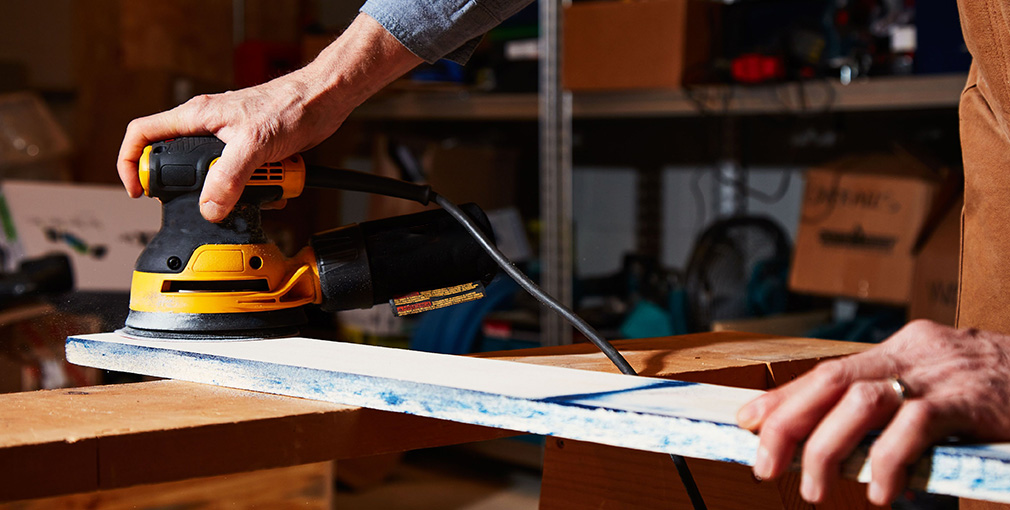
Sanding quality plays a major role in achieving the best finish possible on your project. Sanding with an orbital sander, either random or with no pattern, is not difficult; nonetheless, there are a few things to keep in mind to prevent common issues and achieve the finest possible finish. Improper sanding results in an uneven or blotchy finish due to swirls, too much dust, and other problems. Alternatively, you may always get a high-quality finish if you follow proper technique and steer clear of the errors covered in this article
Applying Pressure Causes A Sudden Stop
When using the orbital sander, one of the most frequent problems that occurs is the abrupt pause in operations when applying pressure. Now there are several causes behind this. Before figuring that out, it is advisable to check if the power cord is plugged in correctly and is not damaged. If that is not the issue, the underlying causes could be due to the motor. In fact, overheated or even worn-out brushes can cause it to stop.
Deterioration Over Time
Another common issue faced is excessive wear and tear. If the sandpaper being used is of poor quality or incompatible with the machine, this could cause a problem. Apart from this, improper sanding techniques, such as applying excessive pressure or using the machine at the wrong angle, can also be a contributing factor. To mitigate this, you need to ensure the sandpaper used is appropriate and the sanding techniques adopted are right. This way, you can extend the lifespan of your sanding pad.
Clogged Sandpaper
If sandpaper gets clogged, this hampers the machine's efficiency and requires frequent replacement. Consider using sanding paper that comes with anti-clogging properties or applying a lubricant that is specifically designed to reduce friction and buildup of debris. Frequently clean the sandpaper to prevent clogging.
Excessive Vibration
Excessive vibration impacts the quality and comfort of your work. This could be due to an unbalanced sanding pad or a worn-out bearing. Inspecting the sanding pad for any visible damage and replacing it if required is advisable.
Unfinished Results
When conducting any task, achieving a smooth finish is imperative. Now, if you notice unfinished work, several factors could be behind it. One of them is the distribution of uneven pressure while working. You need to consistently apply pressure and follow the right sanding technique so the result is polished and clean.
Unusual Noise
If you notice any unusual or excessive noise from the machine, consider this a warning sign. Start by checking the sanding pad; an ill-fitted one could be the cause. If the vibrations continue, there could be a malfunction in the motor or a damaged internal component. In such cases, seeking advice from experts is beneficial.
Overheating
It's critical to take quick action to fix an orbital sander overheating problem in order to save the instrument from breaking down. Many factors can lead to overheating, including extended and vigorous sanding sessions or insufficient airflow surrounding the engine. During lengthy sanding sessions, take frequent breaks to let the sander cool down in order to troubleshoot this issue.
Power Loss
An abrupt power outage with your orbital sander can seriously impede your sanding work. There are several potential causes of this problem, such as a broken power cord, a worn-out switch, or a broken motor. Start by looking for any obvious damage or loose connections on the power cord.